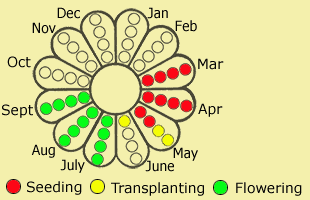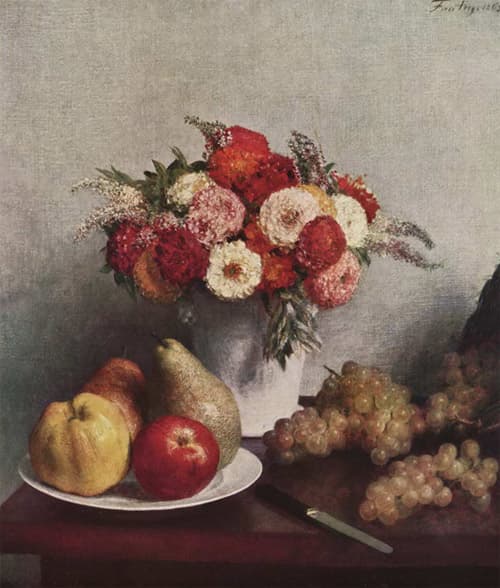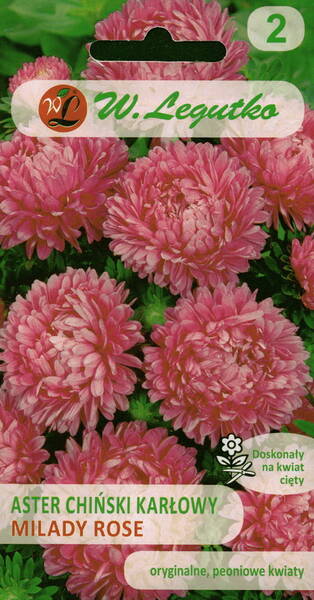Autumn flower queen!

Reproduction: by seeds. Seeds remain viable for 2-3 years. 1 gram contains about 450 seeds.
Sowing can be carried out both in the open (in autumn and spring) and in the protected ground (within a month, starting from mid-March).
For seedlings, plants of medium-late and late-flowering are sown in a warm room in boxes (second half of March).
The soil is prepared in advance; it should be nutritious, breathable, and kept very well. Options are possible here, for example: sod land, river sand, humus (3: 1: 0.5); sod land, humus, sand (2-3: 1: 0.5); sod land, peat, sand (1:2:2).
The sand must be washed and calcined in an oven at a temperature of + 80 ° C. Before sowing, the earth in a box is shed with a hot solution of potassium permanganate (2 g per 10 l). These measures will protect plants from blackleg disease.
Seeding rate - 3 g of seeds per standard box. Seeds are sprinkled with dry, finely sifted humus (layer 0.5 cm thick) and watered. The crops are covered with a plastic film, and until the emergence of shoots, the temperature in the room is maintained at 18-20 °. The next time it is watered after the emergence of seedlings (seeds germinate on the 3-10th day). In order for seedlings to grow and develop normally, the temperature should not be below +15 ° C.
Seedlings are planted in open ground from late May - early June. The soil under the asters should be fertile, and moisture permeable, as the plants do not tolerate stagnant water. Before planting, hummus, wood ash, and compost are introduced, but in no case fresh manure.
When planting seedlings, it is necessary to ensure that the roots do not bend and the growing point is not covered. Tall varieties with a wide bush are planted at a distance of 30-40 cm from each other, medium-sized - 20-25 cm, dwarf - 10-15 cm. In the future, normal care - timely watering, weeding and loosening.
Plants of early and medium flowering period are sown in early April in the soil of a heated film greenhouse or in greenhouses. The soil is prepared 1-2 weeks before sowing: humus is added and dug up, leveled with a rake, ridges are made 1 m wide, and then they are shed with a hot 0.2% solution of potassium permanganate at the rate of 1 bucket per 1 m2. After that, they are covered with a plastic film, which helps to preserve heat and moisture, and also provokes the germination of weed seeds. To get rid of their seedlings, after 3-6 days they dig up the earth or loosen it with a rake. If there are a lot of weed seeds in the soil, then the procedure is repeated again.
This technique allows you to grow seedlings with virtually no weeding. If weeds still appear, then they are chosen when thinning aster crops. On the day of sowing, the prepared soil is loosened again, lightly tamped and marked (5 x 5 cm or 6 x 6 cm). Seeds after sowing are sprinkled with earth or finely sifted humus, watered with water at room temperature and covered with plastic wrap, which is not removed until germination. In the future, the seedlings are watered with warm water to avoid the appearance of root rot. The temperature in the greenhouse should be about 18-20 °, humidity 70-80%. Seedlings are planted in prepared soil.

Fantin-Latour Henri.
The culture is cold-resistant, well tolerates frosts down to -3 ..-4 ° С. Plants obtained from seeds during winter sowing in open ground begin to bloom 10-14 days later, and during spring (April) - 14-17 days later than plants hatched by seedlings, however, their flowering is more abundant and longer.
Use: depending on the height of the stem and the decorativeness of the inflorescences, asta are suitable for flower beds, group plantings and borders in the garden or for decorating balconies and terraces.
* Aster is unusually beautiful in bouquets. Lush or graceful, light inflorescences on long strong stems are magnificent in large bouquets. From small-flowered varieties, lovely boutonnieres and bouquets are obtained.
Cut aster flowers remain fresh in water in bouquets for up to 14 days. We must not forget only to wash the stems and change the water in the vases to fresh.
China aster is the queen of the autumn flower garden. To decorate flower beds, special varieties of dwarf size have been created. Low-growing varieties (varieties of Dwarf royal asters, Triumph, Milady garden group, etc.) are also beautiful in large groups on a green lawn.
In recent times, asters were planted in city flower beds and flowerbeds after biennials that had faded and lost their decorative effect - forget-me-nots or daisies. You can also use aster to replace faded early spring bulb flowers (planted side by side, they will cover the bulbs that fall asleep in the summer and protect them from overheating in the hot summer, and they will save them from weeds).
You can plant an aster in flower beds at any time. The roots of the aster are very branched and easily restored (if slightly torn off during transplantation). Therefore, even adult plants can be transplanted, with buds or already blooming, grown in the "reserve".
Asters are beautiful on balconies and loggias, you can keep them in flowerpots in cool rooms and winter gardens. For this purpose, breeders have also created special varieties, and lovely garden groups: Milady, Petito and Pinocchio.
In the collection of annual asters, there are varieties suitable for growing in greenhouses. They bloom with a certain growing technology at non-traditional dates for asters: early spring or late autumn - in November.











